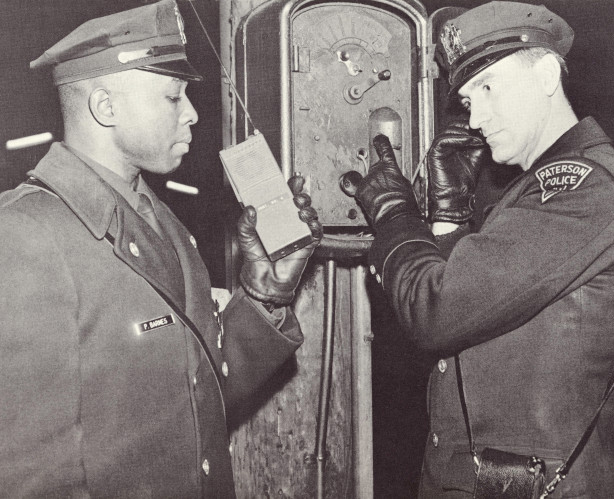Exec Interview: Motorola Rolls Out Its Access & Video Vision
Find out why Motorola Solutions has become so receptive to the security channel and how it’s fıne-tuning its market approach.

For most people, the name Motorola brings to mind two-way radios (walkie-talkies), cellphones, emergency communications and related devices and technologies. During the course of 90 years — from its 1928 founding in Chicago by brothers Paul and Joseph Galvin to 2018 — the company recorded many communications breakthroughs and marketed countless products.
Those milestones included an early car radio in 1930 (inspiring the company name by combining “motor” with “ola,” implying sound); creating technology that carried the first words from the moon (1969); developing the first commercial handheld cellphone (1983); and revolutionizing public safety communications.
More recently, after many decades of proven leadership working hand-in-hand with the electronic security industry to provide solutions that also help manage emergency situations and ensure the safety of people and property, Motorola has officially joined the security ranks.

Actually, it is Motorola Solutions — the other half of the former Motorola entity that in 2011 was also split into Motorola Mobility — that has made the leap. Establishment of Motorola Solutions’ Video Security & Analytics business began in 2018 with the acquisition of high-profile video surveillance and access control systems supplier Avigilon.
It was soon followed by public safety mobile video specialist WatchGuard and data and analytics firm VaaS Int’l (both 2019); video solutions vendor IndigoVision and iconic camera maker Pelco (2020); and innovative access control startup Openpath Security (2021).
“We’ve seen a lot of innovation in the consumer space by leveraging the Cloud and mobile. It’s now a mobile-first world and we should embrace that,” says John Kedzierski, senior vice president for Video Security & Analytics. “With Openpath, we saw a company that dove headlong into where we see the industry going and reimagined the category that, frankly, didn’t see a lot of innovation in the last decade. We saw their solution as a slam-dunk fit with where we want to go, not only in access control but also in video security.”
To learn much more about where the Motorola Solutions Video Security & Analytics roadmap leads, SSI spoke at length with Kedzierski and fellow executives in the business Hamish Dobson, vice president of product, and James Segil, vice president of access control. They believe the path to future success is paved with sophisticated video-access integration, convenience and ease of use, the Cloud, mobile-first and artificial intelligence.
Please detail Motorola Solutions’ business units as it stands today.
John Kedzierski: At Motorola Solutions, we report through two business segments, Products & Systems Integration and Software & Services. Across those two segments, there’s a number of different product lines in different industries that we often integrate together to build out a full mission-critical ecosystem. Within the business units themselves, we report on our LMR [Land Mobile Radio] Mission Critical Communications business, our Command Center Software business and Video Security & Analytics, which the team here represents.
As examples of some of the products that fit into those categories, within Video Security & Analytics are Avigilon, IndigoVision, Pelco, Openpath Security, WatchGuard Video, which makes in-car video and body-wearing systems, and Vigilant Solutions. Within the software space, we have the command center software that includes everything from 911 call-taking through computer-aided dispatch, records and evidence management. Some key portfolios there are the CommandCentral software suite and our cybersecurity services.
For mission-critical communications, we offer radio networks for the global standards around the world, such as Project 25, primarily in North America, the TETRA [Terrestrial Trunked Radio] standard and the DMR [Digital Mobile Radio] standards. Some of the brands you would know here are APX radios, our ASTRO 25 networks, our DIMETRA systems and our MOTOTRBO systems.
You mentioned security brands acquired in recent years, most recently Openpath. Could you highlight them and explain how they strengthen the business?
 Kedzierski: As we build our organic capabilities we also look externally for acquisition candidates to help accelerate our vision. We are investing in this market because we think we can make a positive impact for our end customers and our channel partners that bring our solutions to them. We’re going to do that by getting closer to that vision and continuing to extend it over time.
Kedzierski: As we build our organic capabilities we also look externally for acquisition candidates to help accelerate our vision. We are investing in this market because we think we can make a positive impact for our end customers and our channel partners that bring our solutions to them. We’re going to do that by getting closer to that vision and continuing to extend it over time.
It’s threefold. One, we believe in making watching video obsolete. Today, we can use computer vision powered by AI to drive insights out of video security systems and tell operators, customers, landowners what’s happening inside their facilities. Second, we want to make the customer experience for enterprise-grade security systems like the best consumer devices that we all understand. We want to make systems very easy to deploy, manage, use and get insights out of them. Point three is, in an increasingly on-the-go world, we want to ensure our customers can consume our content on a mobile device.
In terms of how some of the pieces fit, our big foray into the physical security space was the acquisition of Avigilon three years ago. Avigilon brought an industry-leading end-to-end video security portfolio, video management systems, cameras and the analytics that tie that together to be able to create insights, as well as an access control portfolio. Using that as a starting point, we added pieces to bring the rest of the vision to fruition.
We added IndigoVision, which also brought an end-to-end portfolio with a focus outside North America, bringing us more international channels and customers. We acquired Pelco, a very storied historic brand in the industry, to bring us a portfolio of cameras, extend our channels globally and have a brand for customers just looking for a camera and not an entire end-to-end portfolio.
We added WatchGuard Video to bring a mobile perspective to our security systems, not only for law enforcement, where we’ve seen a huge amount of growth with body cameras, but also in commercial markets. There it becomes not just a camera that’s fixed on the wall but one that gives the video security operator perspective of what their employees or security guards see as they move throughout a facility or property.
With Openpath Security, we think access control is a critical part of achieving our vision of providing customers insights and outcomes, not just selling them boxes. We have an access control business in Avigilon, but for the vision I described we seek to make enterprise security systems have consumer ease of use and embrace mobile convenience. We see Openpath as the absolute access control leader in those areas and a great fit to help us get to our destination faster.
How does the transaction fundamentally change Openpath’s trajectory?
 James Segil: The reason behind the acquisition was to accelerate our growth. There are so many different ways Motorola can help Openpath at this stage in our business. As a venture-backed company, we spent a lot of time focused on raising money, thinking about how to hire fast and expand.
James Segil: The reason behind the acquisition was to accelerate our growth. There are so many different ways Motorola can help Openpath at this stage in our business. As a venture-backed company, we spent a lot of time focused on raising money, thinking about how to hire fast and expand.
As a new brand in the market, trying to establish credibility with customers and channel partners is also where a lot of effort is put with our day-to-day energies. Motorola solves a lot of those problems right away and lets us really focus in on our product, product development, and making our customers and channel partners happy. They bring us instant scale and credibility.
From a sales perspective, we now have the opportunity to sell through and with the Motorola salesforce and channel partners, and that is certainly a lot larger than what we had in place. Then, we have the benefit of their scale on the operations, manufacturing and supply chain side.
Given some of the challenges in the marketplace today, it is a great big brother to have when it comes to being able to ensure we have high-quality product manufactured really well and available for customers.
Finally, there’s the credibility the Motorola Solutions brand brings with large enterprise customers, which is where we were focused in terms of moving up the food chain. Motorola really understands how to service the enterprise and sell big solutions that can scale and be supported on a global level.

Motorola milestones include early car radios; transmitting words from the moon; developing commercial handheld cellphones; and revolutionizing public safety communications.
Motorola has long been ubiquitous with communications technologies but only recently plunged into security. Why did the organization stand on the sidelines so long? What prompted going all in?
Kedzierski: The legacy of this 90-year-plus company has been providing mission-critical communications to governments and enterprises around the world for decades. We’ve enabled first responders, the frontline workers, to communicate instantly, making cities safer and helping businesses work.
As part of our involvement in those spaces, we’ve been around video security and physical security for quite some time. We saw video security as an extension of the solutions we provide today. In adding video security, we can not only enable our customers to communicate instantly using their voice but also enable them to see what is happening and gain insights with AI.
We think enterprise security is more critical than ever today, not only with radio communications but also video security and access control together. We can provide powerful real-time insights to businesses that just weren’t possible to previously expose. As an example, with video security and access control we can create use cases such as sending an alert directly to the radio a security guard is already carrying if a door is open in the back of a school. We saw it as a great fit to extend what we do today, which is making our customers the best in their moments that matter.
If you enjoyed this article and want to receive more valuable industry content like this, click here to sign up for our FREE digital newsletters!

Security Is Our Business, Too
For professionals who recommend, buy and install all types of electronic security equipment, a free subscription to Commercial Integrator + Security Sales & Integration is like having a consultant on call. You’ll find an ideal balance of technology and business coverage, with installation tips and techniques for products and updates on how to add to your bottom line.
A FREE subscription to the top resource for security and integration industry will prove to be invaluable.









This is not Motorola’s first foray into security or access control. In the 1990’s they acquired Indala, arguably the first and for sure the largest at the time provider of RFID (“prox”) cards for access control and combined it with their Smart Card division. At that time it was easily 8-10x as large as HID the smaller company that was carving out its own position in the space. Eventually under Motorola’s leadership the company faltered and HID became the dominant player and actually acquired Indala from Motorola in 2001 or 2002. It’s great to see well funded large industrial companies see the opportunity in this industry.
Joe, I had forgotten about that attempt 20 years ago! Thank you for the historical perspective.